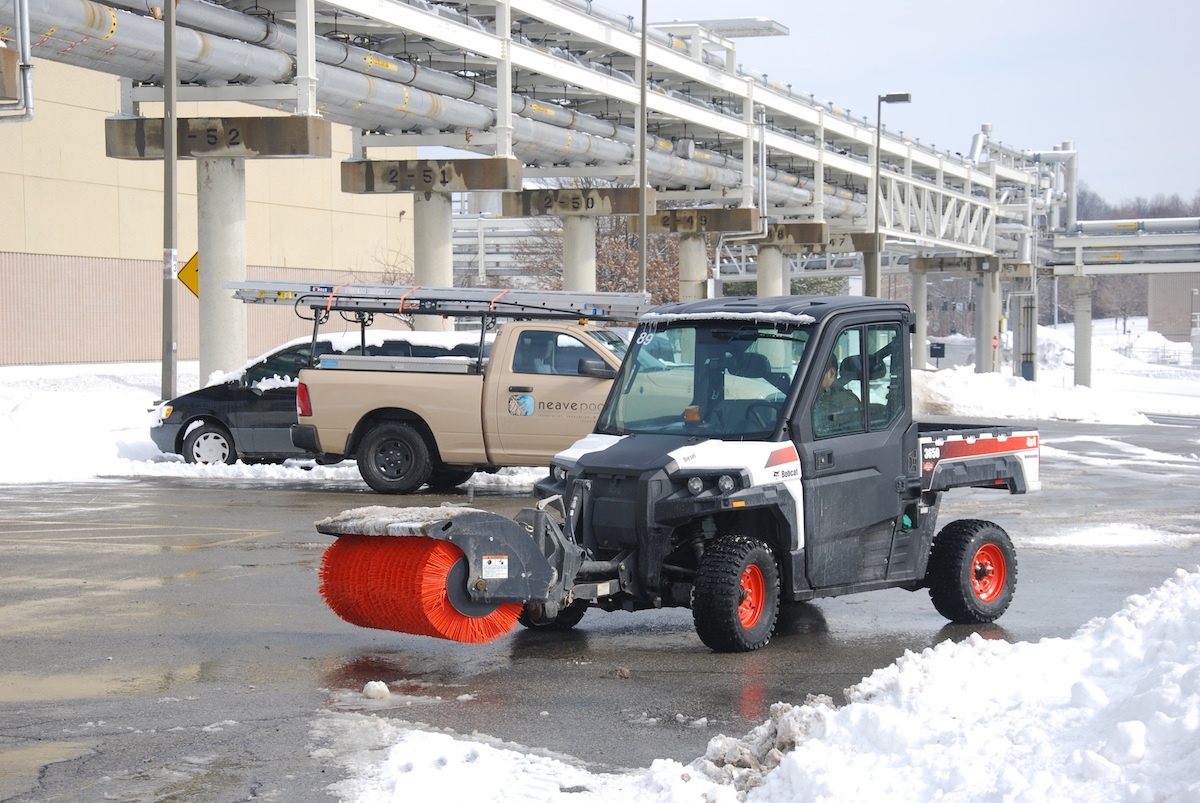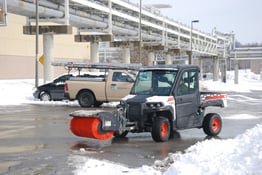If snow management services are part of your business model, then it should never be too far from your mind.
Even though the warm weather can dramatically shift your focus, if you wait too long to plan for the snow season, you could risk hurting your winter revenue—something that is vital to keep many landscape businesses afloat in the off season.
We talked to Bret Achtenhagen, of Bret’s Achtenhagen’s Seasonal Services and
Richard Kuperus of Farmside Landscape & Design to find out how being proactive is the key to success in snow.
Get Proposals Ready Early
For Achtenhagen, renewal of existing contracts from 2019 is completed by August since it’s not uncommon for their Wisconsin snow season to start as early as October. In the past, they’ve always hand delivered every proposal for accounts of $2,500 or above—but the pandemic has changed all of that. Now, they have to make more time to use Microsoft Teams and Zoom to make sure they’re still connecting with those clients as much as possible.
Achtenhagen says that they use the Proposal Manager tool in Asset to handle those proposals. Once it’s clear how many renewals there will be, Asset is also used to cultivate a list of clients who might be able to fill in any available gaps.
“It helps that we can reconnect with clients who we might have done business with in the past but for one reason or another aren’t doing snow with us right now,” Achtenhagen says. “If it weren’t for Asset, we wouldn’t have such easy access to that data and all the details we need to make a solid reconnection.”
Achtenhagen says that getting clients lined up early is essential so that routing can be completed.
“Routing is everything when it comes to making a profit in the snow business,” he adds. “We have to be routed and scheduled very efficiently if we’re going to be successful. There’s no time to waste.”
Have Equipment Ready to Go
Having equipment geared up and ready to go is another essential part of being ready for the snow season. Kuperus points out that even though the snow season may come to an end, preparing for the next one should never really stop.
“Equipment maintenance is one of those areas where it shouldn’t just stop,” he explains. “We are constantly going through our equipment to make sure it’s in optimal working order. We will run our salters at least once a month so they’re not just sitting there and rusting. Preventative maintenance is absolutely key to make sure you’re ready to go.”
Based in New Jersey, Farmside’s snow season may not start quite as early but like Achtenhagen, Kuperus says it’s important to have renewals figured out as early as possible. By the end of the summer, they’ve already started the process.
Part of gearing up to be ready to go also means making sure all trucks are equipped with everything they need, Kuperus adds. This includes a plow and salt repair kit with spare lines, fluid, and other common wear-and-tear items.
“The last thing that we want is for a truck to go down at 2 am and we have to wait for a store to open at 7 am,” he continues. “We want to be able to get back up and running immediately.”
All trucks are also equipped with safety kits and spill kits. The best-prepared snow businesses are those that are anticipating problems before they happen.
Marking and Mapping
Once contracts are pinned down, both companies say that they’re out in the field performing snow audits and gearing up. All sites are marked and mapped, and both companies take plenty of photographs to document the properties in their pre-snow condition.
“Identifying things such as hazards, drainage issues, tree limbs, and high traffic areas are all important in advance of the first snow,” Kuperus says. “Plus, we need to document any damaged areas so that it’s clear they were there before our snow services. We also put snow stakes on all sites to mark boundaries and identify areas such as fire lanes or drains. We use a color-coding system to know exactly what’s located where so we’re still aware even when the snow covers it.”
Kuperus says that these steps are important to be in compliance with insurance requirements. He says that it’s vital a well-run snow business is also a well-documented one.
Being Prepared for Everything
It all boils down to being prepared. Whether it’s before the snow season starts or in the midst of it, always thinking ahead and planning accordingly is a key to success.
Kuperus says that using iCREWtek has been invaluable for documentation purposes. They use this mobile app version of Asset to have the employees clock-in and clock-out and to keep track of what’s happening on site.
Achtenhagen also uses iCREWtek and says that they use iPhones to snap photos ahead of any snow events and then store them in a file under the client’s name.
“This protects us from fraudulent damage claims,” he says.
Once the snow season begins, Achtenhagen says that they’re also using iCREWtek to record all time and material usage. The system records the longitude and latitude as well as time-in and time-out stamps so that every single detail is logged. Drivers will take photos of snow depths and upload the photos into the client’s file—with those data stamps that leave nothing to question.
“It not only allows us the ability to precisely answer client questions such as when we were there or how long we were there, but it also gives us valuable data for job costing,” Achtenhagen says. “Running a successful snow business means being prepared. Thinking ahead and documenting everything that you do can really save you time, money, and headaches in the long run.”



